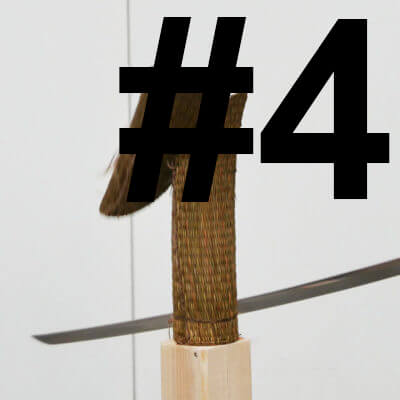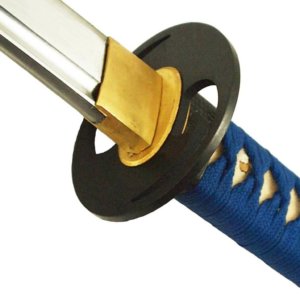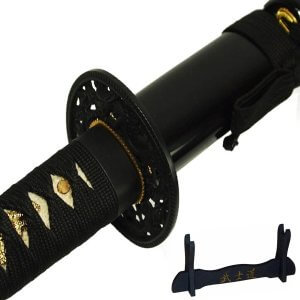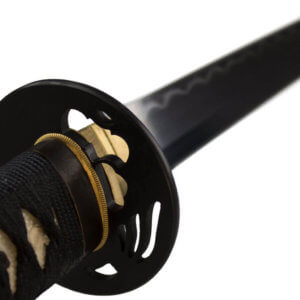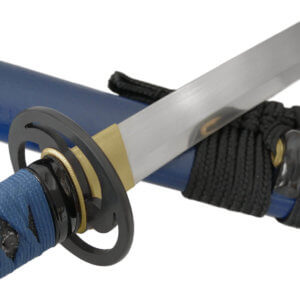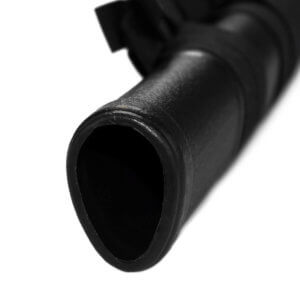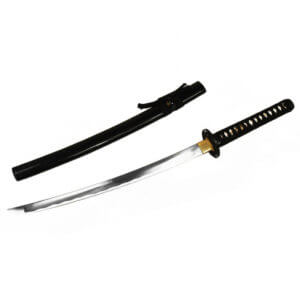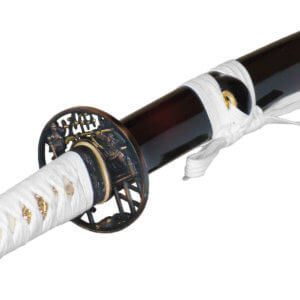The initial situation
The quality of the sword used is crucial.
This is because an inferior sword can quickly break during use, resulting in a high risk of injury.
A basic distinction should be made between a decorative sword and a real samurai sword.
A real katana has a massive tang over which the handle is drawn.
Deco katana have a so-called rat tail. This is a thin extension of the blade that goes into the handle. A rat tail is not designed for stress.
This is an important basis and many a supplier of alleged "Practical Katana" has misjudged this.
A proper sword should therefore always be used for cutting exercises.
The second important point is that the steel is properly forged. It does not matter whether the steel is folded or laminated or whether some exotic blade construction has been chosen.
Forging always involves alternately heating and shaping the steel, followed by hardening.
If errors are made in the temperature treatment during these processes, even the best steel with the most beautiful blade structure will not help!
A defective blade is very likely to break during cutting tests.
So let's assume that a real sword is used that has been properly forged.
Then there are considerable differences between the various types of steel.
Katana made from 1045 steel
are relatively popular, especially because they are comparatively cheap.
You can find these models in our shop, for example:
-
Original price was: 104.90 €.95.00 €Current price is: 95.00 €.
incl. VAT.
Plus. Shipping costs
Delivery time: 2-3 working days
1045 steel has a carbon content of approx. 0.45 per cent and is therefore relatively soft. We only recommend this steel for cutting tests with soft targets such as fruit and PET bottles. The steel would dull very quickly on harder targets. Blades made from this steel are sharpened but not brought to maximum sharpness.
If such a centreboard is to be used for cutting tests, we recommend additional grinding or having it ground beforehand.
Katana made of carbon steel with high carbon content
A higher carbon content, such as in blades made of 1060 carbon steel, offers a higher hardness than blades made of 1045 carbon steel.
Blades made of high-carbon steel can also be used to cut somewhat harder targets such as tatami omote.
The steel is easy to grind and stays sharp longer than the 1045 blades.
Katana made from 1095 carbon steel
1095 steel has a very high carbon content and is therefore also suitable for hard cutting targets such as bamboo. Provided you have the right cutting technique, of course. You should always practise on softer targets first before tackling bamboo.
Katana made from spring steel
Spring steel plays a special role and has become very popular in recent years. Spring steel such as 9260 steel has a high silicon content.
Silicon makes the blade more flexible and so blades made of spring steel can forgive a mistake during cutting tests without the blade being damaged.
However, the steel is somewhat softer than 1095 carbon steel, so we would recommend it for tatami omote at most and 1095 steel for harder cutting targets.
A spring steel katana in action:
That was a brief classification and categorisation of the most common types of steel.
Before every cutting exercise, it is important to check the blade for cracks. In the worst case, blades can break in such weakened areas.
Back to Tameshigiri Tutorial #3: Cutting targets and substrates

